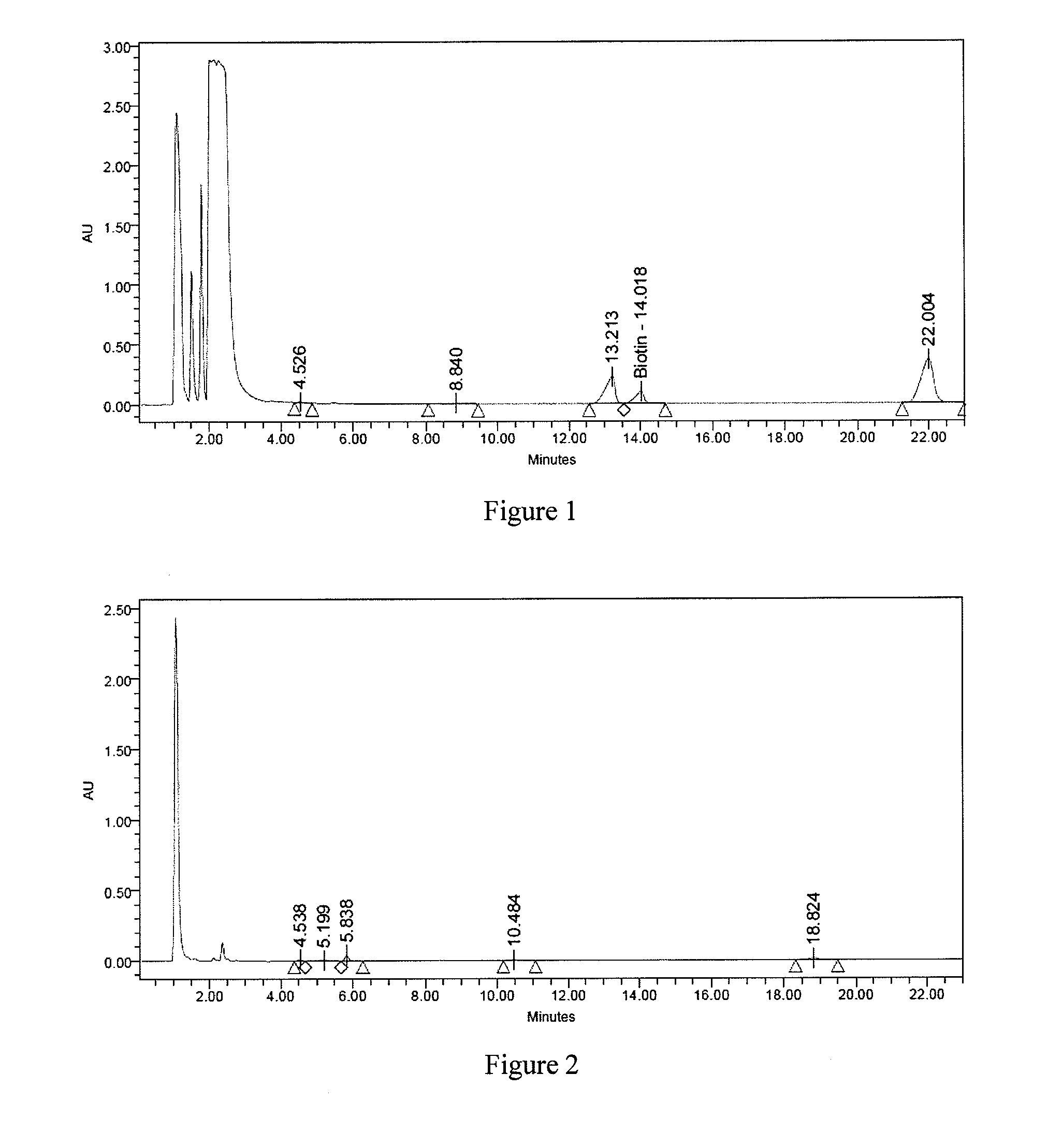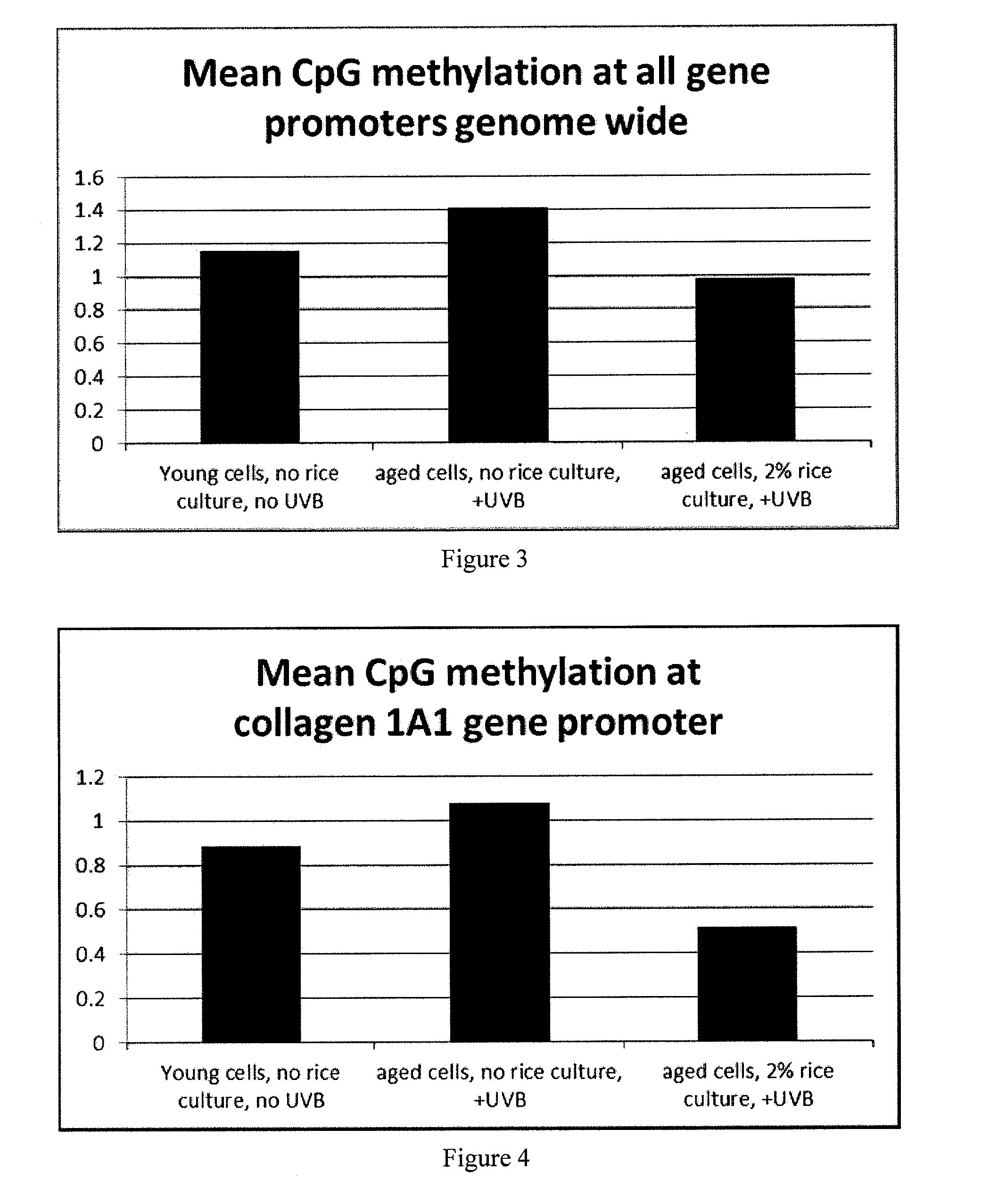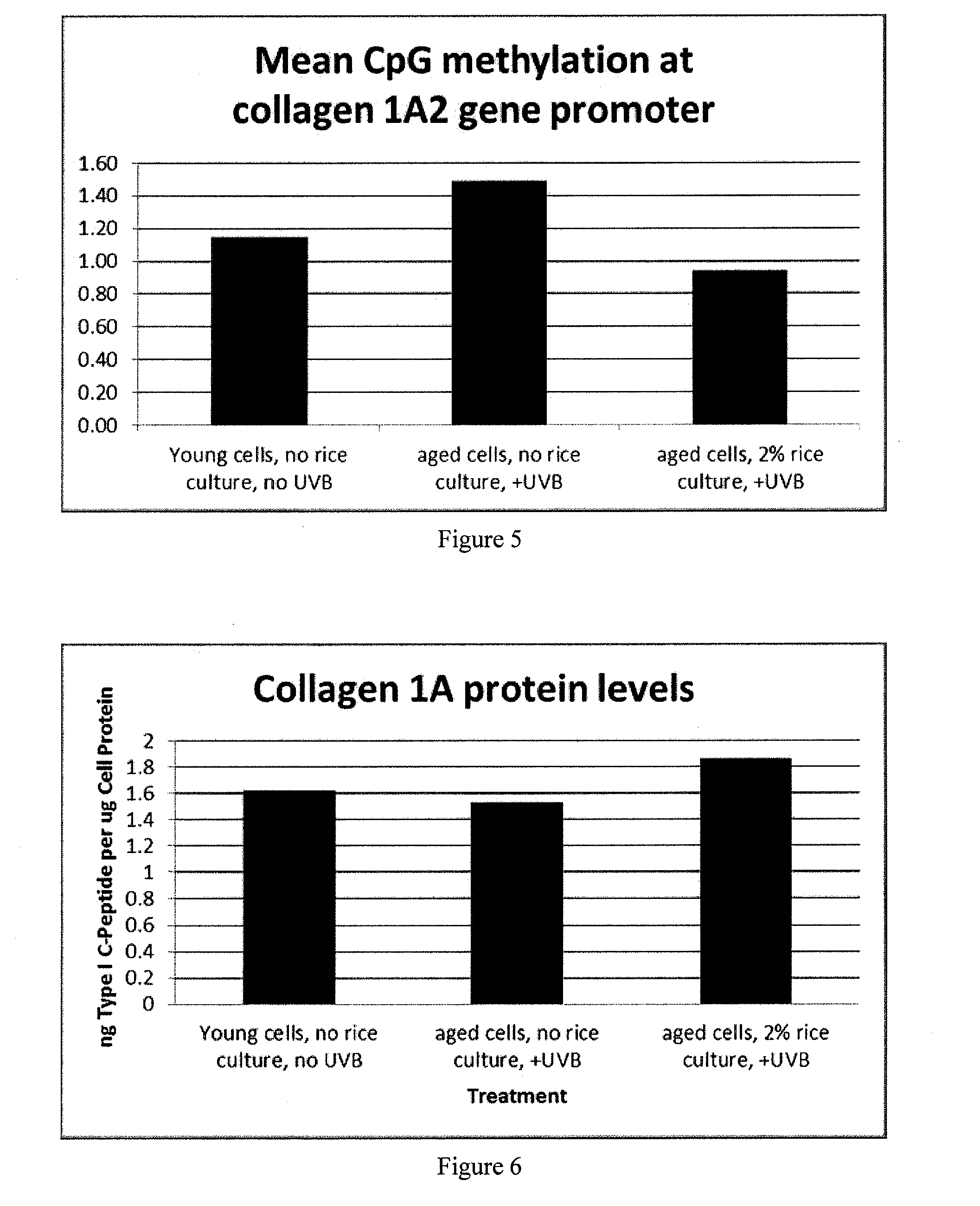Modulating epigenetic DNA methylation to cause cells to adopt DNA methylation patterns associated with young cells
a technology of methylation and epigenetics, applied in the direction of biocide, plant/algae/fungi/lichens ingredients, drug compositions, etc., can solve the problems of not disclosing the use of plant derived actives as a means, and no prior art in topical treatmen
- Summary
- Abstract
- Description
- Claims
- Application Information
AI Technical Summary
Problems solved by technology
Method used
Image
Examples
example 1
Production of a Plant Meristem Conditioned Nutrient Medium from Oryza sativa (Rice)
[0081]Rice meristem cultures were grown on a solid medium (Murashigie & Skoog with Gamborg 1× vitamins, 30 g / L sucrose, 1 mg / L kinetin, 0.2 mg / L IAA, and one percent agar at pH 5.6) and subcultured for at least three months. Callus from the same culture line was inoculated into multiple 250 mL flasks containing approximately 60 mL of the above medium without agar. After two weeks, the culture was moved into a 500 mL flask that contained approximately 130 mL of liquid medium, which contained Murashige & Skoog medium, Gamborg 1× vitamins, 30 g / L sucrose, one mg / L kinetin, 0.2 mg / L IAA, at pH 5.6. After two weeks, the culture was moved into a one liter flask that contained approximately 300 mL of liquid medium. Following fermentation for 14 days, 600 mL of culture was moved into a three liter bioreactor with a working volume of 2.3 liters. After three weeks of fermentation, five liters of culture was mov...
example 2
HPLC Chromatogram of Ozone Stressed Rice Meristem Conditioned Nutrient Medium of Example 1
[0082]HPLC analysis was performed on the meristem conditioned nutrient medium extract of Example 1. Multiple peaks were observed but only one was from biotin denoting the ozone causes the production of secondary metabolites by the rice cultures. Analysis was performed using a Phenomenex Kinetex 2.6 μm, 100×4.6 mm column. Solvent A was methanol. Solvent B was 50 mM sodium phosphate (pH 4.5). Solvent A was used at 10 percent and solvent B was used at 90 percent isocratically. Flow was 1.0 mL per minute and the column temperature was 30° C. Detection was done at 200 nm wavelength. The HPLC analysis result is shown in FIG. 1.
example 3
HPLC Chromatogram of Non-Ozone Stressed Rice Meristem Conditioned Nutrient Medium
[0083]A rice meristem extract was prepared according to the procedure of Example 1 except without the addition of ozone. HPLC analysis of was performed under the conditions as described in Example 1. The result is shown in FIG. 2. As shown in FIG. 2, very few secondary metabolite peaks were observed in the HPLC chromatogram.
PUM
| Property | Measurement | Unit |
|---|---|---|
| Fraction | aaaaa | aaaaa |
| Fraction | aaaaa | aaaaa |
| Fraction | aaaaa | aaaaa |
Abstract
Description
Claims
Application Information
 Login to View More
Login to View More - R&D
- Intellectual Property
- Life Sciences
- Materials
- Tech Scout
- Unparalleled Data Quality
- Higher Quality Content
- 60% Fewer Hallucinations
Browse by: Latest US Patents, China's latest patents, Technical Efficacy Thesaurus, Application Domain, Technology Topic, Popular Technical Reports.
© 2025 PatSnap. All rights reserved.Legal|Privacy policy|Modern Slavery Act Transparency Statement|Sitemap|About US| Contact US: help@patsnap.com



